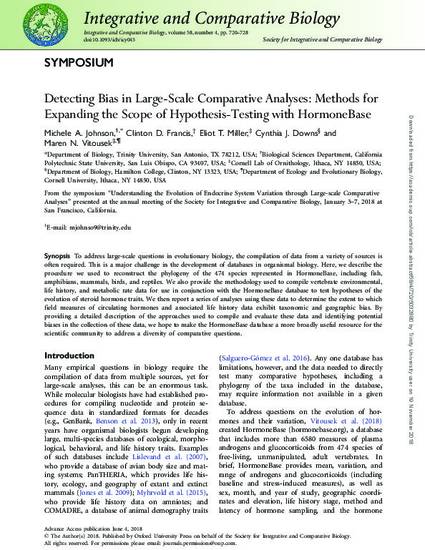
- Biology and
- Life Sciences
To address large-scale questions in evolutionary biology, the compilation of data from a variety of sources is often required. This is a major challenge in the development of databases in organismal biology. Here, we describe the procedure we used to reconstruct the phylogeny of the 474 species represented in HormoneBase, including fish, amphibians, mammals, birds, and reptiles. We also provide the methodology used to compile vertebrate environmental, life history, and metabolic rate data for use in conjunction with the HormoneBase database to test hypotheses of the evolution of steroid hormone traits. We then report a series of analyses using these data to determine the extent to which field measures of circulating hormones and associated life history data exhibit taxonomic and geographic bias. By providing a detailed description of the approaches used to compile and evaluate these data and identifying potential biases in the collection of these data, we hope to make the HormoneBase database a more broadly useful resource for the scientific community to address a diversity of comparative questions.
